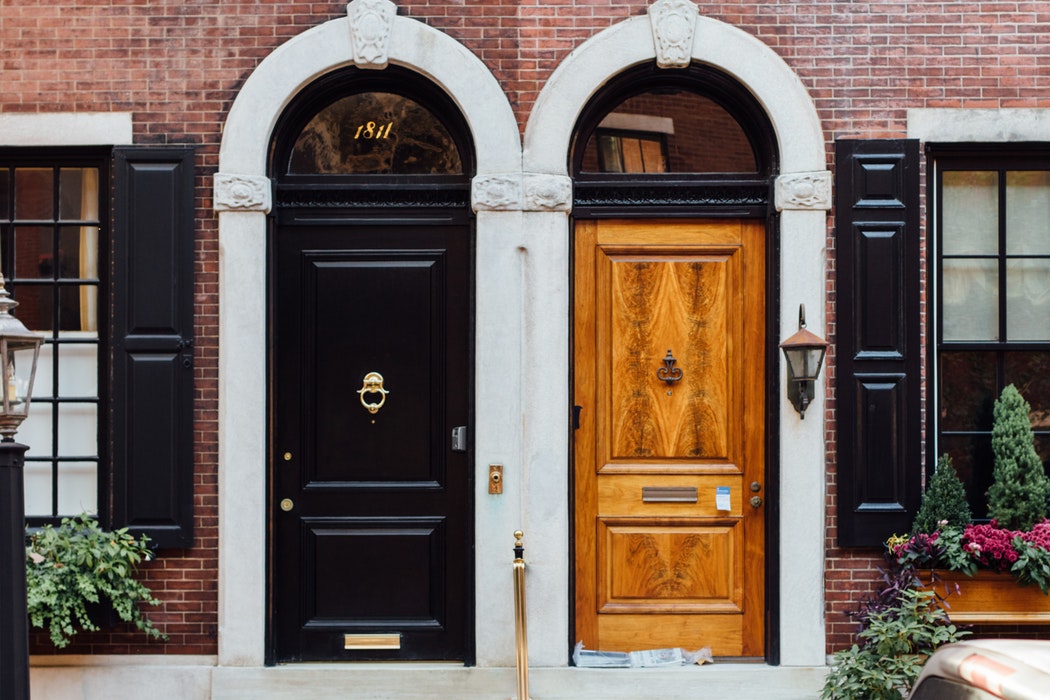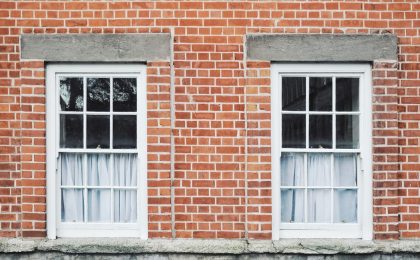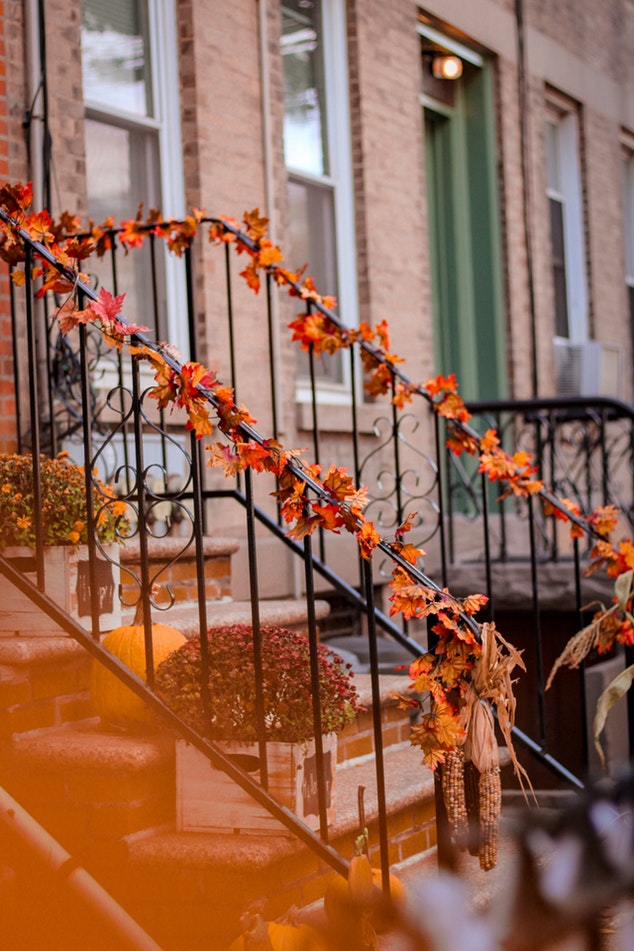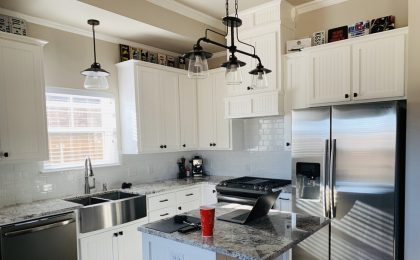An Energy Efficient Rowhouse? Is that a joke?
I get the skepticism. My rowhouse? We are talking about 100 year old homes that often weren’t updated until the last twenty years. Before that it was Uncle Mike promising he would make something better and now your bathroom lights go out when the kitchen blows a fuse.
But there are ways we can improve the efficiency of our rowhouses (or rowhomes, I will use them interchangeably in all my blogs on the subject). There are a few sure fire hacks or tricks that can make your home consume less energy, as well as some investments that make your carbon footprint go down – just like your electric and gas bills.
What are they? Let’s get into it and see how we can save you some green while making you more, well, green.

Slimming black or eco-friendly reclaimed wood?
First: Seal up your rowhouse sanctuary.
The first tip is to eliminate ways for air to get in or out of your home. While there are plenty of reasons that this is a good idea (water damage, anyone?), it is one of the main ways that your home can become an energy hog.
The reason is pretty simple. In the summer, hot air can creep in and make your AC work overtime to fight against this constant invader. And in the winter cold air will seep through and drag temperatures down, making your furnace gobble up gas like there’s no tomorrow.
The primary offenders for these kinds of leaks are windows and doors. Let’s start with windows.
Windows in rowhouses usually leak because they are either old and not updated, or brand new but poorly installed.
If they are old, chances are the putty that holds the panes has deteriorated with age, letting air slip under or even between the panes of glass. If you bought your rowhome with all of the original windows and doors, this is a distinct possibility.
It’s also possible that the frame of the window itself is a little warped and that the sliding part of the window is not flush with the exterior pane, making it leaky.
Luckily there are ways to fix it, like in this article. Make sure that you find the source of the leak and either use a seal or caulk the source of the leak, stopping this drain on your pocketbook.
With doors, the issue is usually with a gap on the top, bottom, or side of the door where cold or hot air can sneak into your rowhouse. Again, the issue usually starts with an old door or a new, poorly installed one.
Most of the time the answer is as simple as installing a weather strip to stop the gap and prevent outside air from getting in.
Making sure you control the air that comes into and out of your home can help keep your temperature nice and even, making sure you aren’t overworking your AC, HVAC or furnace and saving you money. A sealed up rowhouse is an energy efficient rowhouse.

And they are the original windows. How cool is that?
Second: Go with the flow.
Speaking of HVAC systems, those of you with air ducts running through your homes need to make sure that they are clean and allow air to move freely.
Even if you have an old forced air vent (and if you have a rowhouse chances are your home did at some point) you need to make sure they are clear and free.
Dirty, clogged or stopped up air ducts prevent the flow of air and make your system work harder for the same result, wasting electricity or gas and making your energy bill a bottomless pit.
You probably are expecting me to just tell you how to clean your air ducts, right? Unfortunately, it isn’t that easy.
Just sticking a vacuum cleaner down a vent isn’t going to do the trick. According to the NADCA, “Failure to clean all components of the system can result in recontamination of the entire system, thus minimizing the benefits of cleaning.” Yikes.
The absolute first thing to do is MAKE SURE YOU CHANGE YOUR FILTER REGULARLY. While there are a ton of reasons you should do this, for this blog just know that it is the easiest way to make sure your ducts have a way to get out the dust, pollen, animal hair and human hair that floats around all the time.
So change your filter at least every 90 days.
For the rest look for a duct cleaning company in your nearby area, or just schedule a complete HVAC maintenance by your preferred company. This is a good idea in general as they can find lots of other ways your system could be burning through more energy than needed.
Which leads me to my next point…

If you think this is cold you should see my rowhouse.
Third: Replace your old HVAC or furnace.
I know you don’t want to hear that. I didn’t when I had to replace mine just months after I bought my rowhouse. But the fact of the matter is you may have to if you have an inefficient system.
Tell me this – are you freezing in the winter even though your thermostat is set to 70? Or are you sweating in August as your system never quite gets to the generous 75 you’ve got it set at?
Then odds are your system is old, or worse, has a leak.
For old furnaces and systems, inefficiency is just part of the game. According to Green Home Guide, “If your furnace was built before 1992 and has a standing pilot, it probably wastes 35 percent of the fuel it uses, and it is probably near the end of its service life.”
To a 100 year old rowhome, 1992 is like yesterday. Investing in a new HVAC system may seem like a lot, but if you factor in how much you will save on energy costs over the life of the new unit it could absolutely be worth it.
And if you have a leak, well, that could mean exploratory construction (cutting holes in walls, knocking through floors or ceilings, etc) to find the leak. And repair could end up costing more than a new unit itself.
You’ll have to figure out if this is a good fit for you. But chances are, if you have an old, inefficient unit or a leaky one, you already know who you are. And that’s why you’re reading this.

Fourth: Get a smart thermostat.
Smart everything is all the rage. Smart phones, smart watches, smart cars. Why not homes? Why not rowhouses?
Smart thermostats are the easy way to do that without having your home look like Bill Gates’ humble Xanadu 2.0 (But if you can hook that up, go for it – I MEAN THE POOL HAS UNDERWATER MUSIC).
There are many options out there currently, but I chose the Nest. The great things about these devices are that they not only change your temperature but they monitor and learn your habits.
No, not in a creepy dude-in-high-school-who-won’t-take-the-hint way, but in a super data-driven practical way. Smart thermostats adjust the temperature when you aren’t around to conserve energy, saving you money for nothing.
They also have a built in “eco mode,” which is basically like setting your phone on “airplane mode” when you want to save some battery. It sets it to temperatures that won’t push the system and makes it run as little as possible.
You can also control your temp from your phone, giving you an additional degree of functionality that makes sense in today’s tech-savvy modern world.
Even in your 100 year old rowhouse.
Fifth: Upgrade your appliances.
I know, I know, I’m telling you to spend more money. But hear me out.
If you’re home has recently been flipped (and I’ll do a blog on the problems with flipped homes soon), you probably have new, energy efficient appliances. That’s great! But for everyone else, you may be throwing money down the drain – or into your dishwasher.
Older appliances were made when gas was cheap, coal burning seemed like a great idea, and standards were lower. In today’s world, they seem like poorly constructed devices that waste natural resources, including your bank account.
Upgrading your refrigerator or your dishwasher or your washer and dryer can save you a tangible amount per month that will add up as the year rolls on. These machines are smarter in the way they use energy, but also usually do their jobs better and with more conveniences.
So when you’re at the local mega hardware store (or your amazing local store like family-owned Brannock & Hiatt in Mount Airy, NC or an old school, family-owned hardware store like PC Smith & Sons in Saugerties, NY, or a cozy local joint that totally gets rowhouses like Henry’s here in Philly) and you see that sexy new washing machine, tell your partner that you want it because it’s super practical.
And get one with the Energy Star symbol to know for sure it’s energy efficient.
Better made, more efficient, more functional, and better looking. What’s not to love?

I feel so… efficient.
Let’s wrap it up.
Being energy efficient saves you money, protects the environment, and shuts up your hippy friend Jenny who will at least go back to talking about goat yoga or something.
Doing these things will also put less wear and tear on the appliances and systems in your house, further saving you money down the road.
If you’ve done one or all of the above, stop and give yourself a pat on the back (or better yet have someone do it for you). Congratulations! It must feel good to be more responsible with your money.
Another way to save money? INSURANCE. (You knew I was going to say that, didn’t you?)
Take two minutes and have a helpful expert at Alliance go over your rowhouse to make sure you’re getting the best and most efficient care you can get from a risk management perspective.
By clicking the link below you can set up an appointment or fill out a quick form to make sure you have the right coverage and the most discounts for your rowhouse. Shouldn’t you treat your homeowners insurance at least as well as you treat your dishwasher?
So go ahead. Click. We’ll be here waiting (but we’ll power down our PCs when you aren’t clicking to save electricity).

